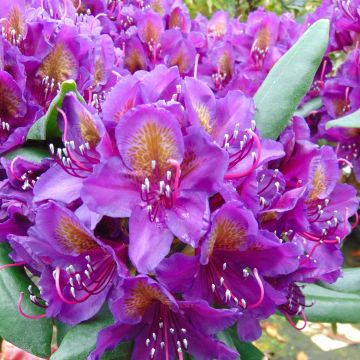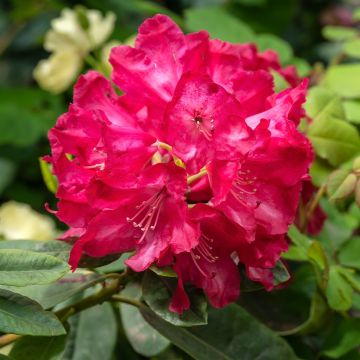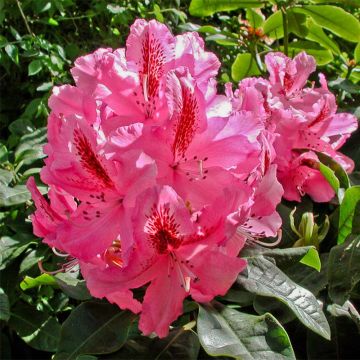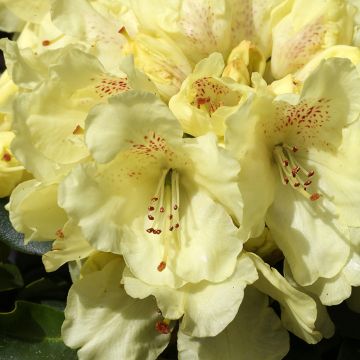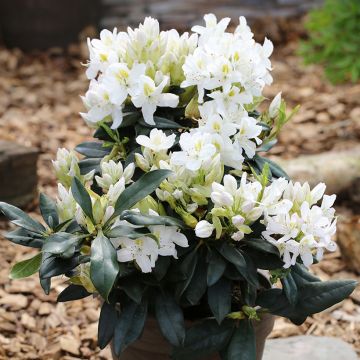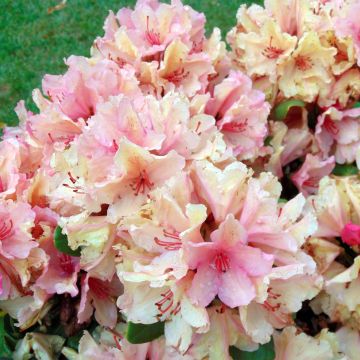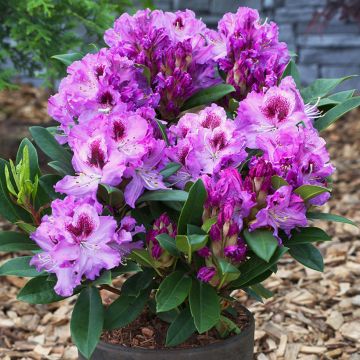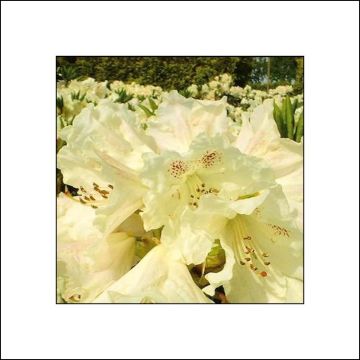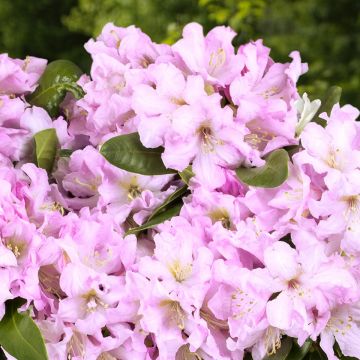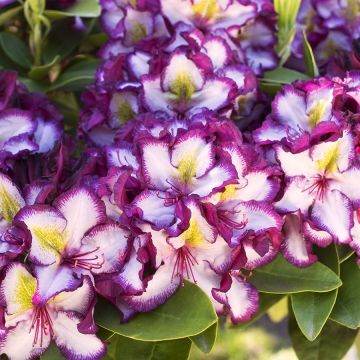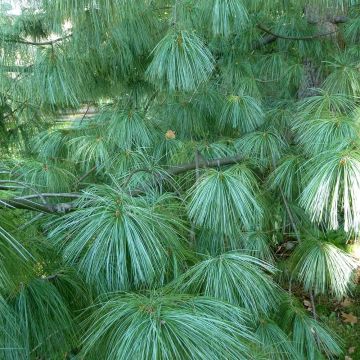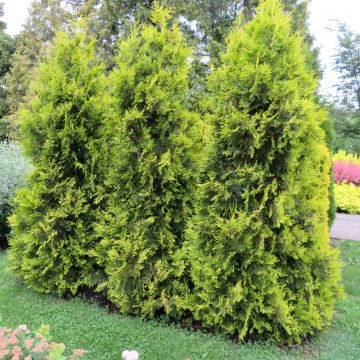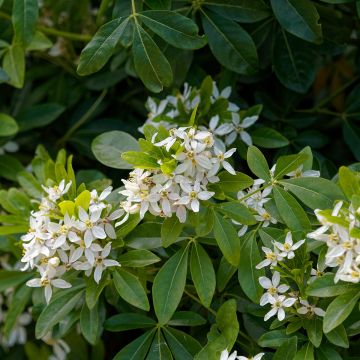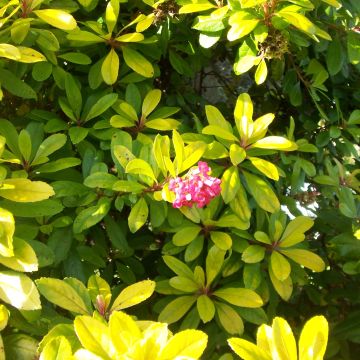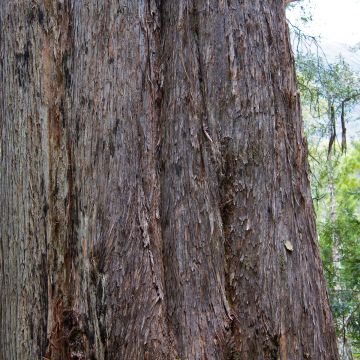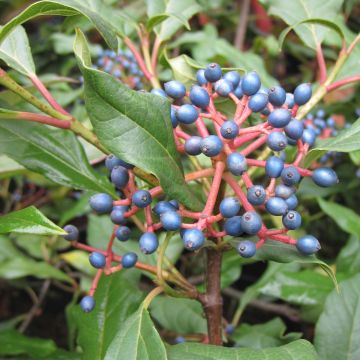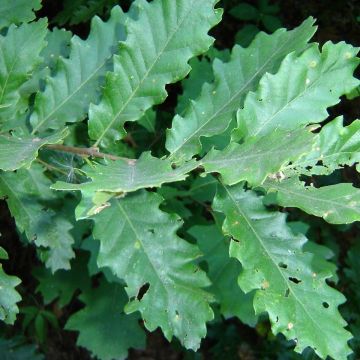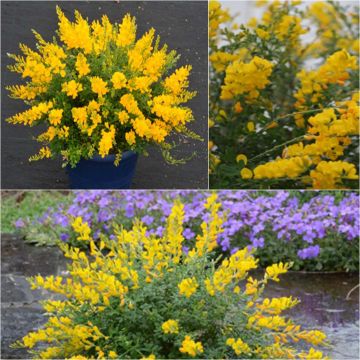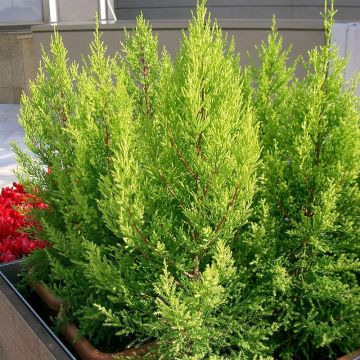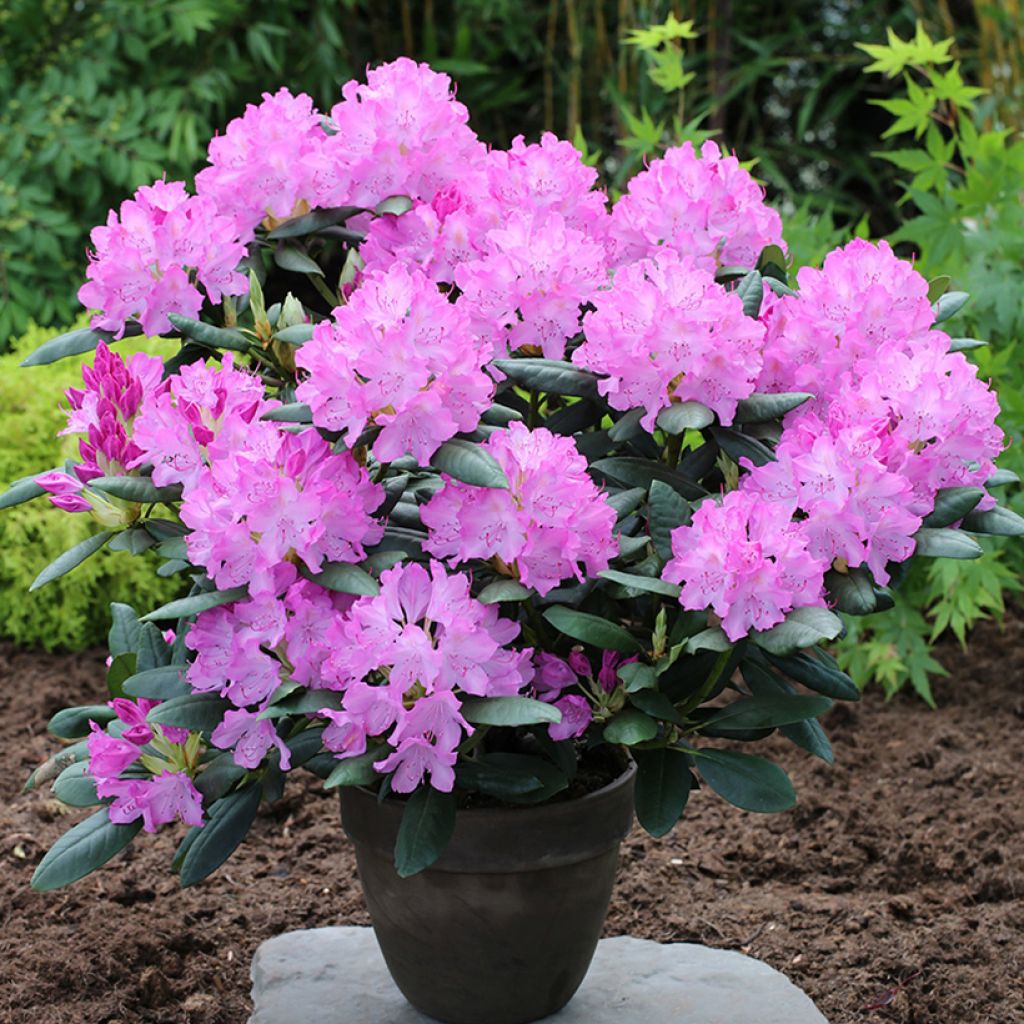

Rhododendron Easydendron English Roseum Inkarho
Rhododendron Easydendron English Roseum Inkarho
Rhododendron Easydendron ® INKARHO English Roseum
Rhododendron, Azalea
This item cannot be shipped to the selected country
Delivery charge from €5.90
More information
Schedule delivery date,
and select date in basket
This plant carries a 24 months recovery warranty
More information
We guarantee the quality of our plants for a full growing cycle, and will replace at our expense any plant that fails to recover under normal climatic and planting conditions.
From €5.90 for pickup delivery and €6.90 for home delivery
Express home delivery from €8.90.
Does this plant fit my garden?
Set up your Plantfit profile →
Description
Rhododendron Easydendron English Roseum Inkarho is a reliable and robust variety, appreciated and awarded. It has been grafted with "Inkharo" to show improved tolerance to slightly limestone or clayey soils. It forms a rounded bush of beautiful stature with elongated, shiny green leaves, boasting a spring flowering so abundant that its foliage is almost hidden. Its large, lilac pink flowers are speckled with orange-brown. Gifted with good cold resistance, but also heat resistance, a quality not so common in these plants, this selection once reserved for ericaceous soil beds can now be planted in a wider variety of conditions, even in slightly limestone or heavy soils. With its lush appearance, this large bush creates superb screens at the back of flower beds or majestic evergreen hedges.
Rhododendrons are plants from the ericaceae family, just like heathers. The history of Inkharo Rhododendrons, somewhat revolutionary plants, began in Germany over 20 years ago. The discovery of a rhododendron naturally growing in a chalk quarry led to the consideration of grafting different varieties onto its extraordinary root system. Shrubs obtained by this method tolerate a wide range of soils with a pH ranging from 4.5 to 7.5, provided they are loose, fertile, moist, and not excessively calcareous. In summary, a soil suitable for hydrangeas. The English Roseum cultivar forms a large bush with a slightly spreading rounded habit, as wide as it is tall. Its growth is relatively fast, reaching an average of 2 m in all directions (sometimes up to 2.50 m in span) in good conditions. The branches are abundantly covered with beautiful glossy dark olive green, narrow, slightly arched, oblong-shaped evergreen leaves. The remarkably abundant flowering occurs from late May to mid-June. The large flowers are grouped in large spherical clusters, with up to 10 funnel-shaped flowers. The colour of the flowers at blooming is a rich pink. Over time, they take on a more mauve hue and reveal a bronzed speckled throat occupied by long curved pink stamens.
Rhododendron English Roseum Inkarho is a very hardy plant, down to approximately -25°C. It will thrive in partial shade in moist, humus-bearing, loose soil. In the garden, with its abundant and delicate flowering, it easily dresses up a shaded area of the garden, alongside Ferns, blue or variegated hostas, Pieris, shrubby Heathers, Kalmias, Azaleas, and Japanese maples, or other rhododendrons from the same group to create superb patchworks of textures and colours. It is versatile and you can also plant it alongside many other flowering shrubs, not necessarily acid-loving: hydrangeas, autumn camellias. Japanese Anemones will also be good companions, as well as bugbanes and foxgloves, in the undergrowth. In a large garden, it could even form a majestic hedge along a grand avenue, alongside other large rhododendrons.
Report an error about the product description
Plant habit
Flowering
Foliage
Botanical data
Rhododendron
Easydendron ® INKARHO English Roseum
Ericaceae
Rhododendron, Azalea
Cultivar or hybrid
Other Inkarho Rhododendrons
Planting and care
Plant the Rhododendron Easydendron English Roseum Inkarho in a semi-shaded location, protected from cold and drying winds, in moist, loose, fertile soil. It should be slightly calcareous, neutral, or acidic, a soil suitable for a hydrangea. Dig a hole three times larger than the pot. Soak the root ball in water and plant the bush at the collar level, in a nourishing mix composed of leaf compost, gravel or pumice, and loam or topsoil, as Inkarho Rhodos are nutrient-demanding plants. Water generously and keep the soil consistently moist. Azaleas and Rhododendrons have a relatively shallow root system. As a result, they are sensitive to long periods of drought. Therefore, soil enriched with humus and abundant watering during dry periods are recommended. Apply a mulch at the base of the bush every spring to maintain soil moisture while keeping a slightly acidic pH. Maintenance involves removing faded flowers and dead branches.
Azaleas and Rhododendrons can sometimes be attacked by vine weevils that eat the edges of leaves and rootlets, as well as by the infamous "rhododendron borer" which does not often cause severe damage. There are effective natural solutions against vine weevils. Leaf yellowing (chlorosis) in Rhododendrons indicates poor iron assimilation in the soil and can lead to premature plant death. While limestone is often the cause, poorly drained soil or a deeply planted root ball can also explain the phenomenon.
Planting period
Intended location
Care
This item has not been reviewed yet - be the first to leave a review about it.
Evergreen shrubs
Haven't found what you were looking for?
Hardiness is the lowest winter temperature a plant can endure without suffering serious damage or even dying. However, hardiness is affected by location (a sheltered area, such as a patio), protection (winter cover) and soil type (hardiness is improved by well-drained soil).

Photo Sharing Terms & Conditions
In order to encourage gardeners to interact and share their experiences, Promesse de fleurs offers various media enabling content to be uploaded onto its Site - in particular via the ‘Photo sharing’ module.
The User agrees to refrain from:
- Posting any content that is illegal, prejudicial, insulting, racist, inciteful to hatred, revisionist, contrary to public decency, that infringes on privacy or on the privacy rights of third parties, in particular the publicity rights of persons and goods, intellectual property rights, or the right to privacy.
- Submitting content on behalf of a third party;
- Impersonate the identity of a third party and/or publish any personal information about a third party;
In general, the User undertakes to refrain from any unethical behaviour.
All Content (in particular text, comments, files, images, photos, videos, creative works, etc.), which may be subject to property or intellectual property rights, image or other private rights, shall remain the property of the User, subject to the limited rights granted by the terms of the licence granted by Promesse de fleurs as stated below. Users are at liberty to publish or not to publish such Content on the Site, notably via the ‘Photo Sharing’ facility, and accept that this Content shall be made public and freely accessible, notably on the Internet.
Users further acknowledge, undertake to have ,and guarantee that they hold all necessary rights and permissions to publish such material on the Site, in particular with regard to the legislation in force pertaining to any privacy, property, intellectual property, image, or contractual rights, or rights of any other nature. By publishing such Content on the Site, Users acknowledge accepting full liability as publishers of the Content within the meaning of the law, and grant Promesse de fleurs, free of charge, an inclusive, worldwide licence for the said Content for the entire duration of its publication, including all reproduction, representation, up/downloading, displaying, performing, transmission, and storage rights.
Users also grant permission for their name to be linked to the Content and accept that this link may not always be made available.
By engaging in posting material, Users consent to their Content becoming automatically accessible on the Internet, in particular on other sites and/or blogs and/or web pages of the Promesse de fleurs site, including in particular social pages and the Promesse de fleurs catalogue.
Users may secure the removal of entrusted content free of charge by issuing a simple request via our contact form.
The flowering period indicated on our website applies to countries and regions located in USDA zone 8 (France, the United Kingdom, Ireland, the Netherlands, etc.)
It will vary according to where you live:
- In zones 9 to 10 (Italy, Spain, Greece, etc.), flowering will occur about 2 to 4 weeks earlier.
- In zones 6 to 7 (Germany, Poland, Slovenia, and lower mountainous regions), flowering will be delayed by 2 to 3 weeks.
- In zone 5 (Central Europe, Scandinavia), blooming will be delayed by 3 to 5 weeks.
In temperate climates, pruning of spring-flowering shrubs (forsythia, spireas, etc.) should be done just after flowering.
Pruning of summer-flowering shrubs (Indian Lilac, Perovskia, etc.) can be done in winter or spring.
In cold regions as well as with frost-sensitive plants, avoid pruning too early when severe frosts may still occur.
The planting period indicated on our website applies to countries and regions located in USDA zone 8 (France, United Kingdom, Ireland, Netherlands).
It will vary according to where you live:
- In Mediterranean zones (Marseille, Madrid, Milan, etc.), autumn and winter are the best planting periods.
- In continental zones (Strasbourg, Munich, Vienna, etc.), delay planting by 2 to 3 weeks in spring and bring it forward by 2 to 4 weeks in autumn.
- In mountainous regions (the Alps, Pyrenees, Carpathians, etc.), it is best to plant in late spring (May-June) or late summer (August-September).
The harvesting period indicated on our website applies to countries and regions in USDA zone 8 (France, England, Ireland, the Netherlands).
In colder areas (Scandinavia, Poland, Austria...) fruit and vegetable harvests are likely to be delayed by 3-4 weeks.
In warmer areas (Italy, Spain, Greece, etc.), harvesting will probably take place earlier, depending on weather conditions.
The sowing periods indicated on our website apply to countries and regions within USDA Zone 8 (France, UK, Ireland, Netherlands).
In colder areas (Scandinavia, Poland, Austria...), delay any outdoor sowing by 3-4 weeks, or sow under glass.
In warmer climes (Italy, Spain, Greece, etc.), bring outdoor sowing forward by a few weeks.

































